Neil Armstrong’s famous words “the Eagle has landed” immortalised the lunar module that carried the Apollo 11 crew to the Moon’s surface. Strange as it may seem, the name of this craft came from the mission’s official patch.
Patches originated in the US military, where air crews came up with their own designs to represent particular missions. All the early astronauts were military men, so they took the practice with them to NASA. By the time of Apollo 11, sophisticated designs were drawn up by professional artists and silk-screened onto non-flammable ‘beta cloth’.
Read more about the Apollo programme:
- Everything you ever wanted to know about the Apollo programme
- In pictures: USA vs USSR - the race to the Moon
The Apollo 11 patch was something of a departure, however. The crew opted to leave off their own names so it could represent all of the people involved in the mission. The idea of an eagle originally came from Armstrong’s backup, Jim Lovell, but it was Michael Collins who was instrumental in choosing the final design. Collins recalled the moment of inspiration in his 1974 autobiography Carrying The Fire: “Of course! What better symbol – eagles landed, didn’t they?”
Back at home, Collins leafed through a National Geographic book on birds and found the ideal image: a bald eagle, its wings partially folded, swooping down with its “landing gear extended”. Collins traced the picture and sketched in the Moon’s surface behind it, adding a small Earth in the background. He later confessed that he drew the Earth wrong – it should have been dark at the bottom and lit by sunlight at the top.

After that, the patch’s precise evolution is uncertain, although early sketches were prepared by Allen A Stevens of Rockwell International, a NASA contractor who designed most, if not all, prior Apollo patches. His designs for Apollo 11 incorporate the names of the crew and the Roman numerals XI – in one version the eagle carries them in its talons. The Roman numerals were dropped because Armstrong believed the number ‘11’ would be more easily understood around the world.
There was still something missing, however, and it was the crew’s simulator instructor, Tom Wilson, who came up with it. “Why not an olive branch as a symbol of our peaceful expedition? Beautiful! Where do eagles carry olive branches? In their beaks, naturally,” wrote Collins.
After he’d sketched in the olive branch, Collins, together with Buzz Aldrin and Armstrong, picked a naturalistic black for the sky, with blue and gold around the edge. NASA illustrator James R Cooper finished the artwork and the crew sent it to Washington to be rubber-stamped. Approval, however, wasn’t forthcoming. “The eagle’s powerful talons, extended stiffly below him, were unacceptable. It was too hostile, too warlike,” recalled Collins. The solution was simply to move the olive branch from the eagle’s beak to its feet, although Collins wasn’t happy with the finished result. He thought the bird looked a little uncomfortable.

Momentos from the Moon
Today, original mission patches are extremely valuable. Beta cloths flown to the Moon can fetch $20,000 (approximately £15,300) at auction, while even embroidered patches worn by ground crew and given out as gifts sell for several hundred dollars.
And what of the original artwork? The beautiful eagle painting was by Walter A Weber, the National Geographic Society’s staff artist. It was first published in the July 1950 issue of National Geographic Magazine and was later flipped horizontally for the publication of the book Collins found it in. The patch flipped it again, so the eagle soars from right to left – just as in Weber’s original painting.
Apollo 1
27 January 1967

Commander: Virgil ‘Gus’ Grissom
Command pilot: Ed White
Pilot: Roger Chaffee
The first manned Apollo mission, designed to orbit Earth, ended in tragedy before it began. On 27 January 1967, during a pre-launch training exercise, a fire broke out in the command module, killing the three astronauts inside – Gus Grissom, Ed White and Roger Chaffee.
Grissom was one of the original Project Mercury astronauts, while White had become the first American to walk in space during the 1965 Gemini 4 mission. Apollo 1 would have been Chaffee’s debut mission.
All three received the Congressional Space Medal of Honor posthumously.
The cause of the fire was never found, but was blamed on a lethal combination of design flaws including the command module’s highly pressurised oxygen atmosphere, electrical faults, a faulty escape hatch and flammable materials.
Apollo 7
11-22 October 1968
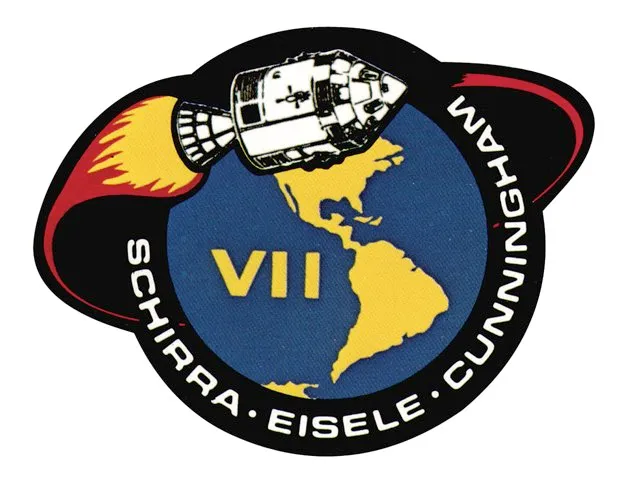
Commander: Walter Schirra
Command module pilot: Donn Eisele
Lunar module pilot: Walter Cunningham
Following the Apollo 1 disaster, Apollo 7 became the first successful manned Apollo mission, orbiting Earth for nearly 11 days (the Apollo 2 and 3 missions were redesignated as Saturn rocket tests, while Apollos 4, 5 and 6 were unmanned test flights).
As well as being the first successful American three-man mission, it also marked the first use of the Saturn IB rocket to propel a manned spacecraft into orbit.
Along with the rocket, the mission allowed the crew to test the command module’s new life support and control systems and, despite reported tensions between crew and mission control, the mission was declared a success.
After the devastating setback of Apollo 1, it was a huge step forward. Buoyed by the outcome, NASA launched Apollo 8 just two months later.
Apollo 8
21-27 December 1968
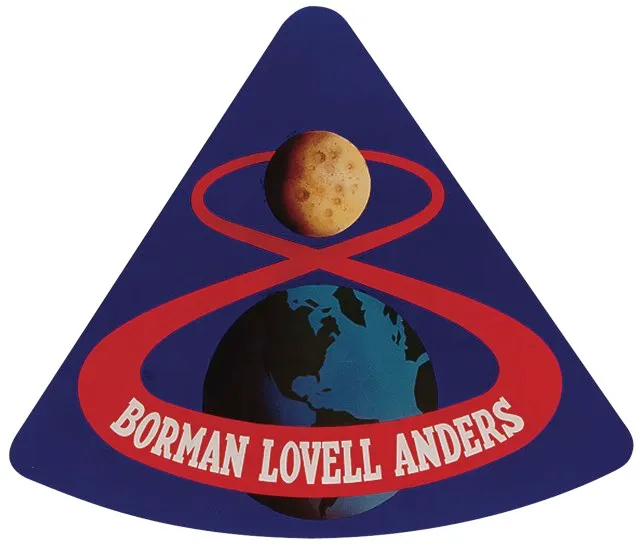
Commander: Frank Borman
Command module pilot:James Lovell
Lunar module pilot:William Anders
Apollo 8 was the first manned Apollo mission to use the Saturn V rocket and the first to orbit the Moon, just seven months before Apollo 11 would land there.
Its crew became the first humans to view the far side of the Moon and witness an earthrise.
“We came all this way to explore the Moon, and the most important thing is that we discovered the Earth,” remarked Anders, who also took the first photos of our planet from space.
Originally planned as an Earth orbit for early 1969, the mission was advanced to a full lunar mission and brought forward almost three months because of NASA’s fears that the Soviet Union would advance further ahead in the space race.
Apollo 9
3-13 March 1969

Commander: James McDivitt
Command module pilot:David Scott
Lunar module pilot:Russell Schweickart
If NASA was to land astronauts on the Moon in a lunar module, it needed to test that the vehicle could detach from and re-dock with the orbiting command module.
During a 10-day lunar orbit, the Apollo 9 crew performed the first manned spaceflight of a lunar module, detaching and re-docking it across a distance of more than 160km.
Schweickart also performed the first spacewalk to test the backpack life-support system, while Scott tested his backpack by spacewalking in the open hatch of the command module.
Crucially, the mission proved that the lunar module concept worked and that astronauts could move freely outside the modules using their backpacks.
Apollo 9 was a watershed mission, moving the programme beyond lunar orbit to the real possibility of a landing.
Apollo 10
18-26 May 1969
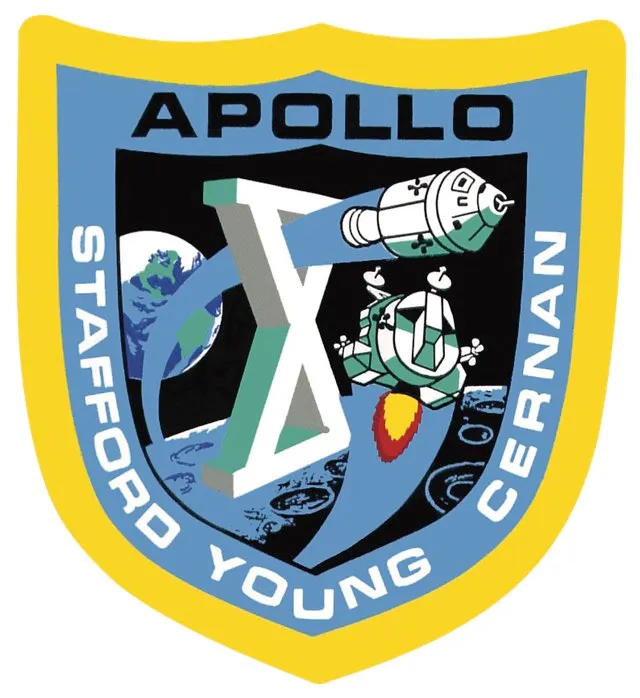
Commander: Thomas Stafford
Command module pilot:John Young
Lunar module pilot:Eugene Cernan
If Apollo 9 set the scene for a Moon landing, then Apollo 10 was the dress rehearsal.
The mission launched with a clear aim: to test the full landing process, without actually landing.
The Apollo 10 crew came tantalisingly close: just 14.5km from the lunar surface.
For the most experienced crew of the Apollo programme, it must have seemed like touching distance and they certainly seemed confident of landing if permitted.
But, aside from the important success of their ‘dry run’ mission, the crew had to content themselves with achieving the highest recorded speed for a manned vehicle, 39,897km/h, during their return to Earth.
Eugene Cernan would later claim another landmark: the last man on the Moon, as commander of Apollo 17 in 1972. But for now, the stage was set for Apollo 11.
Apollo 12
14-24 November 1969
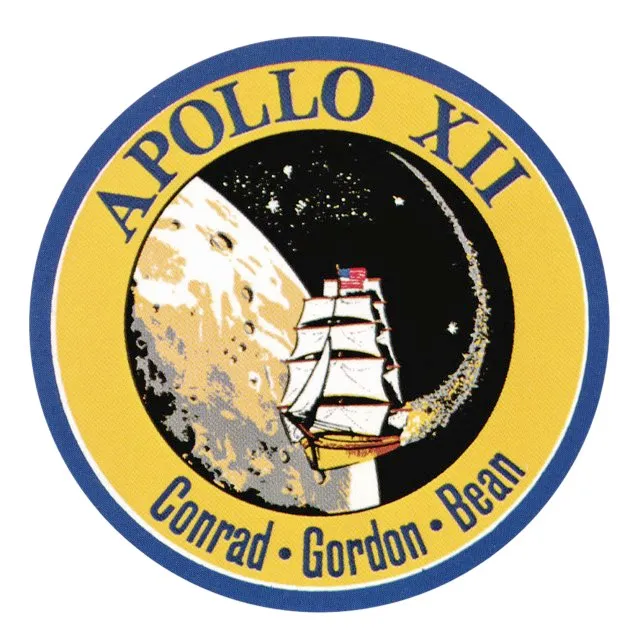
Commander: Charles ‘Pete’ Conrad
Command module pilot:Richard Gordon
Lunar module pilot:Alan Bean
Four months after Apollo 11 realised the dream, Apollo 12 answered the question on everyone’s lips: what now?
Commander Charles ‘Pete’ Conrad and lunar module pilot Alan Bean landed their lunar module on the rugged Ocean of Storms about 1,500km west of the Apollo 11 site as command module pilot Richard F Gordon orbited above.
The aim was to see if a module could be landed on a pre-determined spot with rougher terrain, since this was often the most geologically interesting.
Conrad and Bean achieved a textbook landing in contrast to the heart-in-mouth touchdown of Apollo 11.
Climbing down the ladder, the not-so-tall Conrad looked down at the lunar surface a metre below and joked, “Man, that may have been a small one for Neil, but that’s a long one for me!”
Apollo 13
11 -17 April 1970
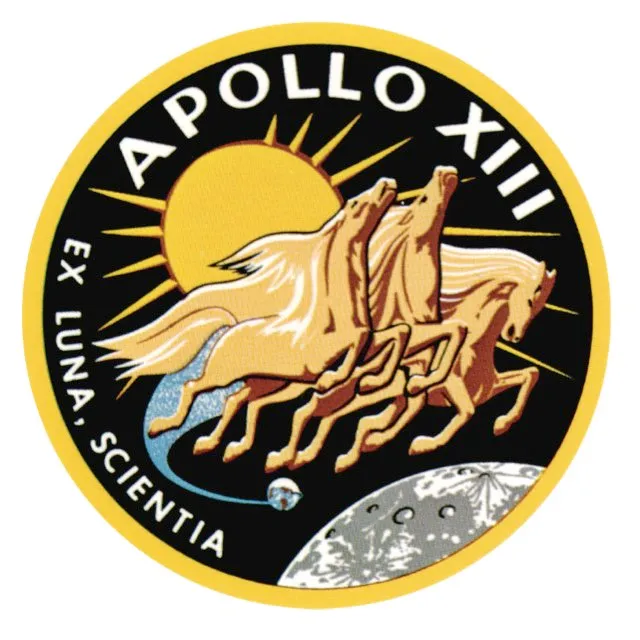
Commander:James Lovell
Command module pilot:John ‘Jack’ Swigert
Lunar module pilot:Fred Haise
If Apollo 12 had been a relaxed mission, its successor was anything but.
Apollo 13’s aim was a third lunar landing but this was replaced by a more pressing mission, survival, after an oxygen tank exploded in the command service module.
The crew were forced to shut down the command module to conserve the remaining power and oxygen for re-entry, and use the lunar module as a lifeboat.
Along with freezing temperatures and limited water, the crew faced asphyxiation from the carbon dioxide they were exhaling into the confined space.
Mission control’s engineering team devised an air filtration system using the lunar module’s cleaning facility and instructed the Apollo crew how to build it.
By returning the astronauts safely to Earth, the mission was deemed a ‘successful failure’.
Apollo 14
31 Jan – 9 Feb 1971
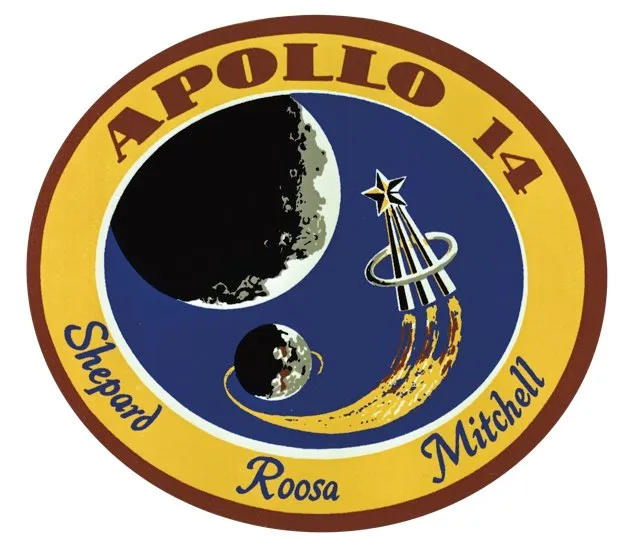
Commander:Alan B Shepard Jr
Command module pilot:Stuart Roosa
Lunar module pilot:Edgar Mitchell
NASA’s eighth manned mission landed on the Moon’s hilly Fra Mauro formation, the site intended for its ill-fated predecessor.
As well as a reminder of NASA’s ability to land a module on uneven ground, Apollo 14 provided the first colour television images from the Moon and a chance to study the Moon’s geological history through the rocks surrounding the landing site.
Commander Alan Shepard and lunar module pilot Edgar Mitchell carried out several surface studies of the material and collected over 42kg of rocks for further analysis, as command module pilot Stuart Roosa orbited above.
As well as a scientific success, the mission held personal significance for Shepard, who had overcome Ménière’s Disease, an inner ear disorder, to be there. He celebrated by being the first man to hit a golf ball on the Moon.
Apollo 15
26 July – 7 August 1971
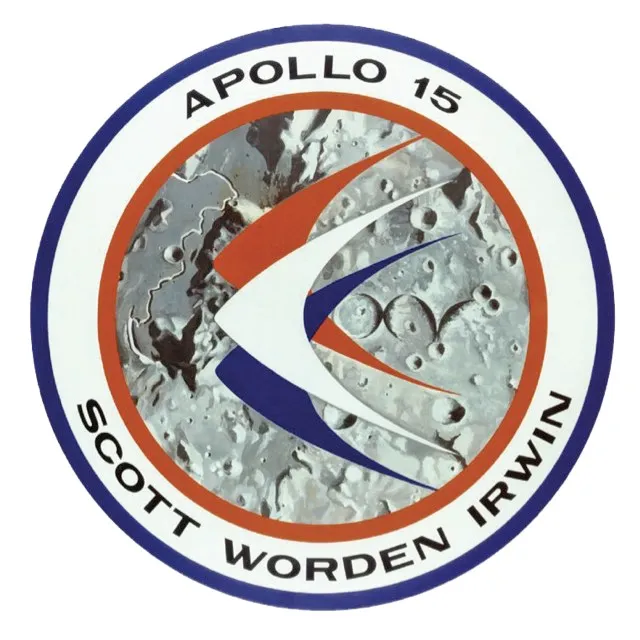
Commander: David Scott
Command module pilot:Alfred Worden
Lunar module pilot:James Irwin
Having landed on the Moon, NASA was beginning to think that was the easy bit – the hard part was staying there. To this end, Apollo 15 launched as the first of the ‘J’ missions, designed for a longer stay.
David Scott and James Irwin spent nearly three days on the surface, using the lunar roving vehicle (Moon buggy) for the first time to gather rock samples from further afield and conduct more detailed scientific studies.
Alfred Worden was also busy in orbit using a scientific instrument module (SIM) to study the Moon from above. The SIM included, among other cutting-edge technology, a panoramic camera that provided stunning lunar images and a lunar sub-satellite to measure the Moon’s gravity field and solar particles.
Upon its return, NASA proudly declared Apollo 15 to be the most successful manned flight ever.
Apollo 16
16-27 April 1972
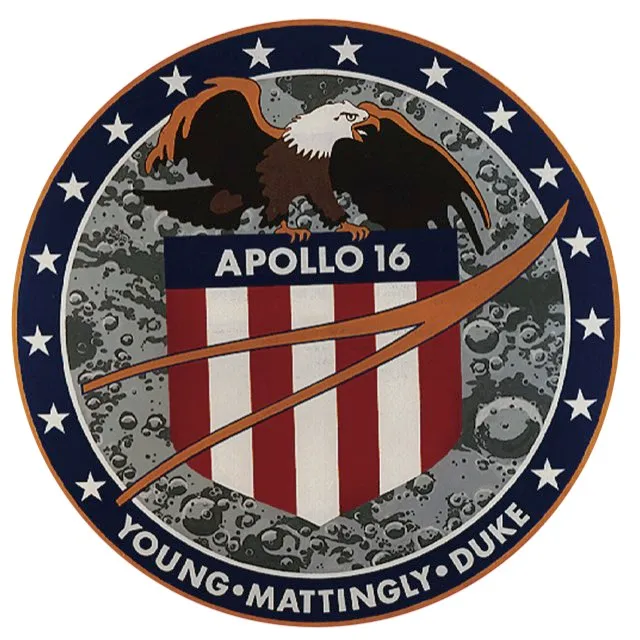
Commander: John Young
Command module pilot:Thomas ‘Ken’ Mattingly
Lunar module pilot:Charles Duke
NASA’s thoughts were now focused on extended lunar stays, but a command module malfunction meant Apollo 16’s stay was cut short – and nearly didn’t happen at all.
“I’d practised the landing 2,000 times – and crashed 1,000 times – in a simulator,” recalls Charles Duke. “But just before we were about to do it for real, we got the signal to abort. We were so close! Fortunately, mission control solved the problem and four hours later we were cleared to land.”
Duke and John Young landed in the Descartes Highlands. As with Apollo 15, the mission deployed the lunar rover vehicle and a low-lunar orbit subsatellite, with the crew conducting 26 experiments.
In orbit, Ken Mattingly mapped the lunar equator and completed a spacewalk on the return journey to retrieve film and data from the SIM bay.
Apollo 17
7-19 December 1972

Commander: Eugene Cernan
Command module pilot:Ronald Evans
Lunar module pilot:Harrison ‘Jack’ Schmitt
The final lunar landing was also the first night launch of an American manned spaceflight, at 12.33am EST on 7 December 1972.
Apollo 17 broke other records too: the longest manned lunar landing flight, the greatest distance by a lunar vehicle (35km), the largest haul of lunar material (110.4kg) and the longest lunar orbit.
Harrison Schmitt was also the only scientist on the Moon. And, of course, as the last man to climb back into the lunar module, Eugene Cernan left the last set of footprints on the lunar surface. For Ron Evans, it was to be his only space flight, having been backup for Apollo 14.
The crew left a plaque, signed by them and President Nixon, which read: “Here man completed his first explorations of the Moon. December 1972 AD. May the spirit of peace in which we came be reflected in the lives of all mankind.”
Follow Science Focus onTwitter,Facebook, Instagramand Flipboard